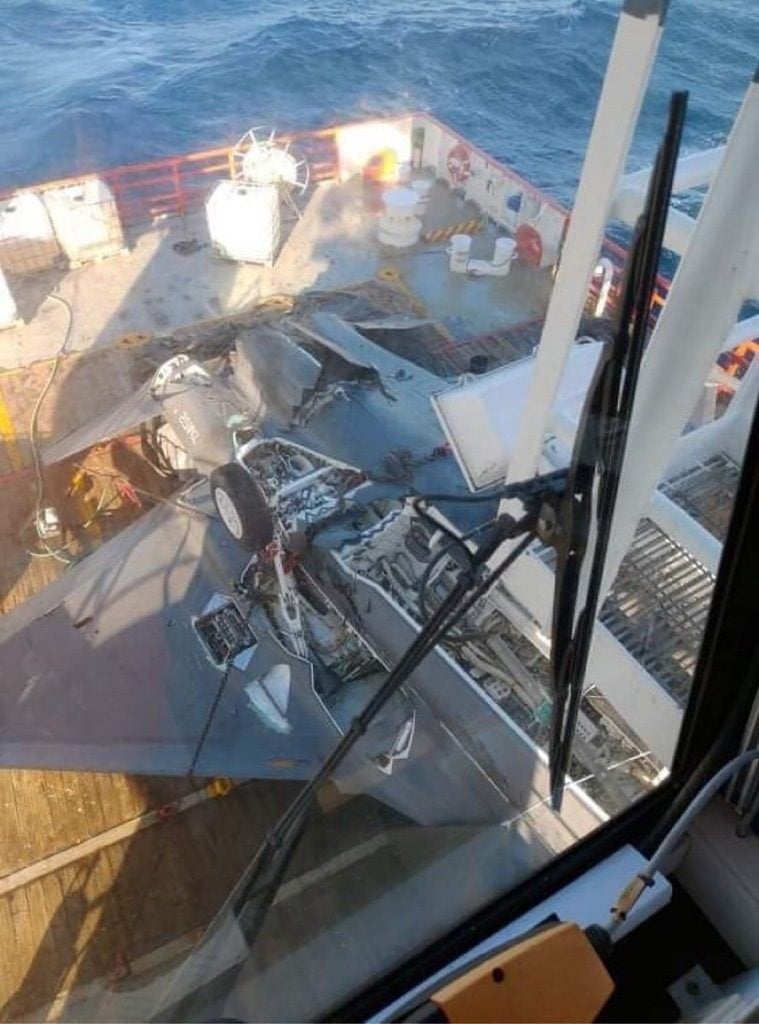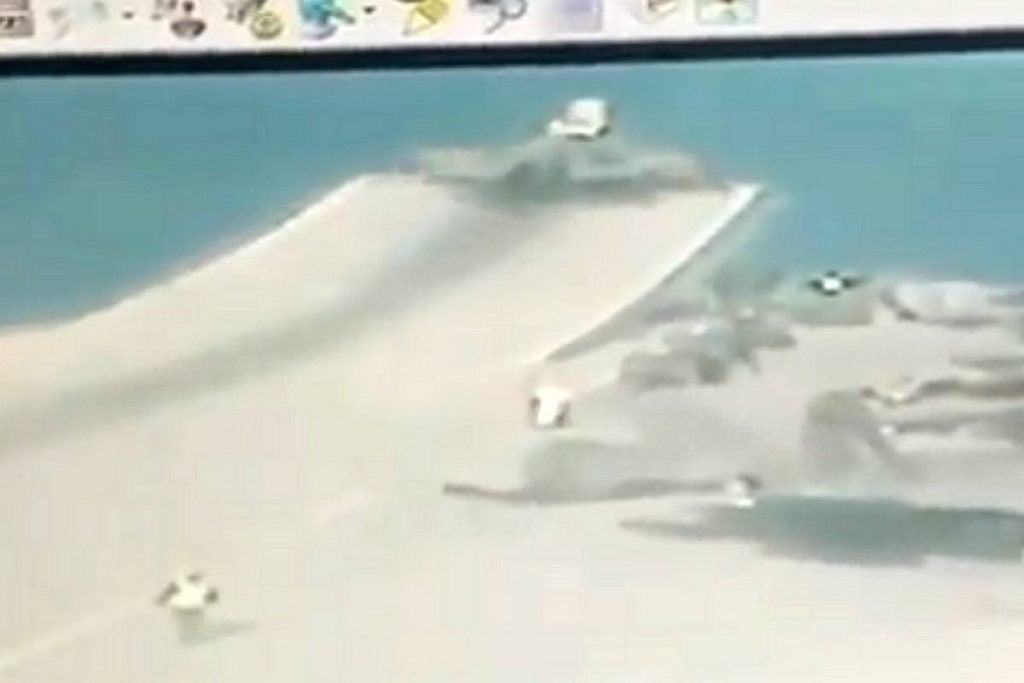Interim Report: Engine Cover Ingestion Caused 2021 British F-35B Crash
An interim report released by the United Kingdom’s Defence Safety Authority on the inquiry into the crash of a Royal Air Force F-35B into the Mediterranean in November 2021 states that it was most likely caused by “human, organizational and procedural factors” that resulted in an engine cover failing to be removed before the aircraft begun its takeoff run from the HMS Queen Elizabeth.
In the report, the Defence Safety Authority’s investigative panel stated that it was “almost certain” that a single engine intake blank had been left inside the F-35B’s engine intake at the time of launch, restricting engine airflow to the point where it was unable to generate enough power to successfully take off. While the investigation is still ongoing, the preliminary findings were reached after flight data recorder analysis by manufacturer Lockheed Martin and an independent Airworthiness Review identified no technical issues with the F-35B.
The November 17, 2021 crash of F-35B ZM152 occured after the pilot noticed a lower than expected engine power output while accelerating for takeoff. The pilot attempted to abort the takeoff run, ejecting after unsuccessfully attempting to stop the aircraft before the end of the ramp and landing on the flight deck with minor injuries. The F-35B subsequently sank, with its remains recovered and returned to the UK in December in a joint effort between the UK, United States and Italy.

According to the report, ZM152 and all other F-35Bs parked on the flight deck of the HMS Queen Elizabeth had been fitted with Red Gear to protect from ingress of foreign objects during the carrier’s transit through the Suez Canal on the return leg of its inaugural CSG21 deployment, the day before the incident. Red Gear includes engine intake blanks.
ZM152 was serviced the night of the transit to prepare it for flight operations on the following day, with two engineers tasked with servicing it. The first engineer conducted their assigned servicing work shortly after 21:30 local time and completed it no later than 23:00. The second engineer started their work at 00:30 after a mid-shift meal.
The report stated that the engineers had removed some elements of the Red Gear, but no entry was required in the aircraft’s technical log for their fitment or removal. Similarly, there was a local accounting procedure for the fitment or removal of Red Gear, but it was not used for the mass fitting and removal of Red Gear during the Suez transit. Additionally, no muster was conducted prior to the start of flight operations to ensure the removal of all Red Gear from the aircraft. Following the crash of ZM152, the left-hand intake blank was observed floating clear of the aircraft’s wreckage, and was subsequently impounded.
The inquiry will continue to pursue a standard of evidence to cover other possible causes, with a focus on “potential mechanisms of movement of the intake blank” and comparing UK service procedures with those of other F-35 operators. Other factors the inquiry is continuing to examine include equipment design, workforce resource, fatigue management, quality assurance and post-occurrence management of the incident, with the goal of identifying relevant lessons that may help prevent recurrence and enhance aviation safety.

